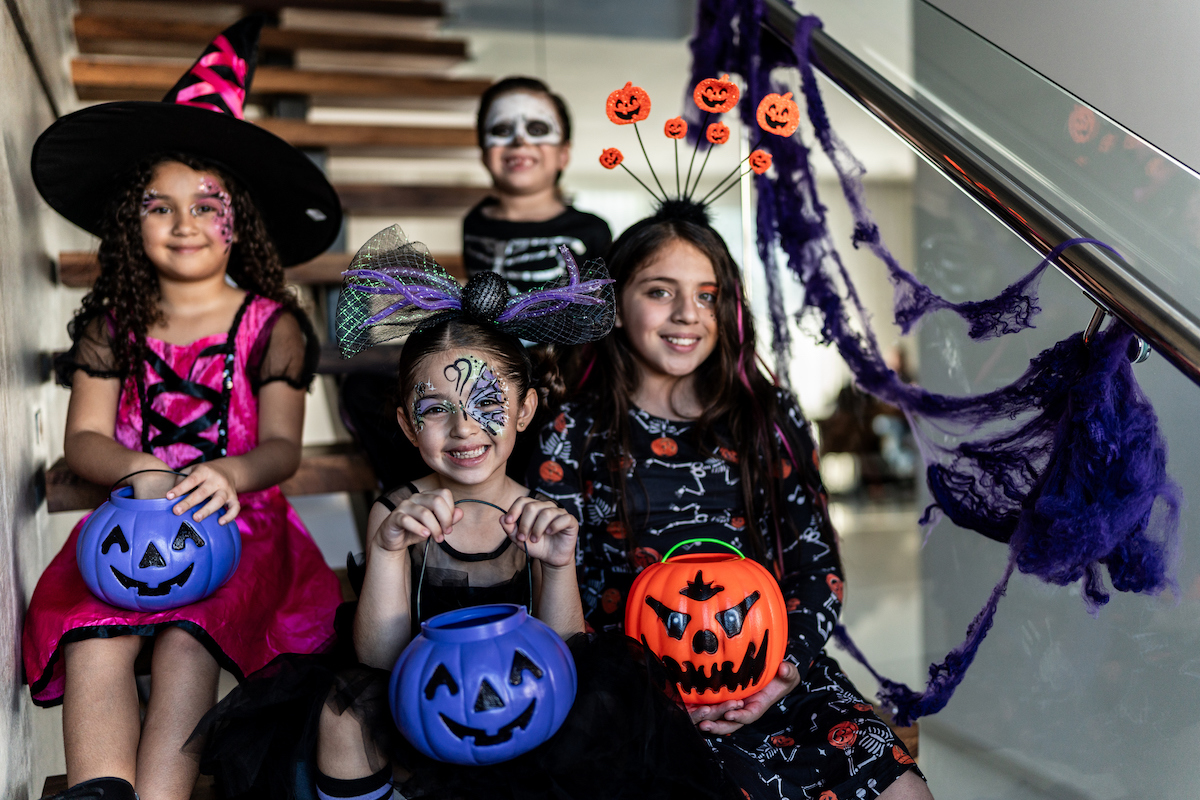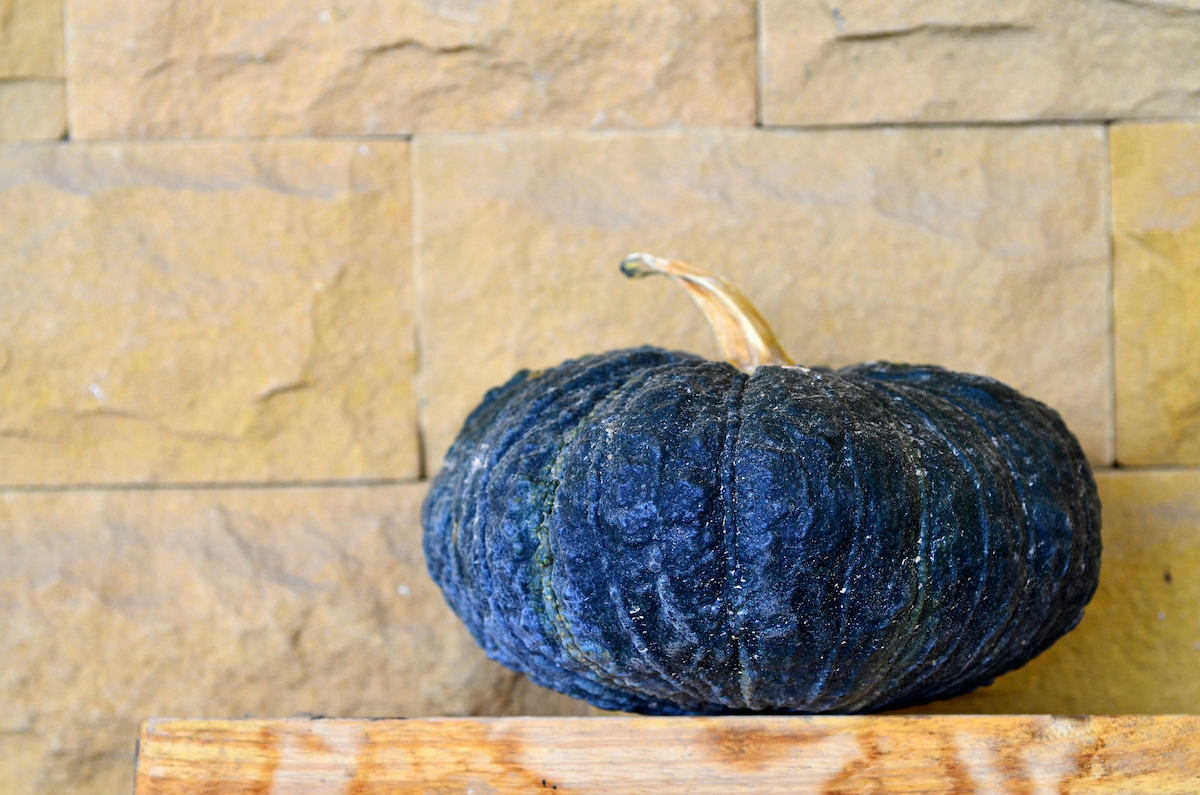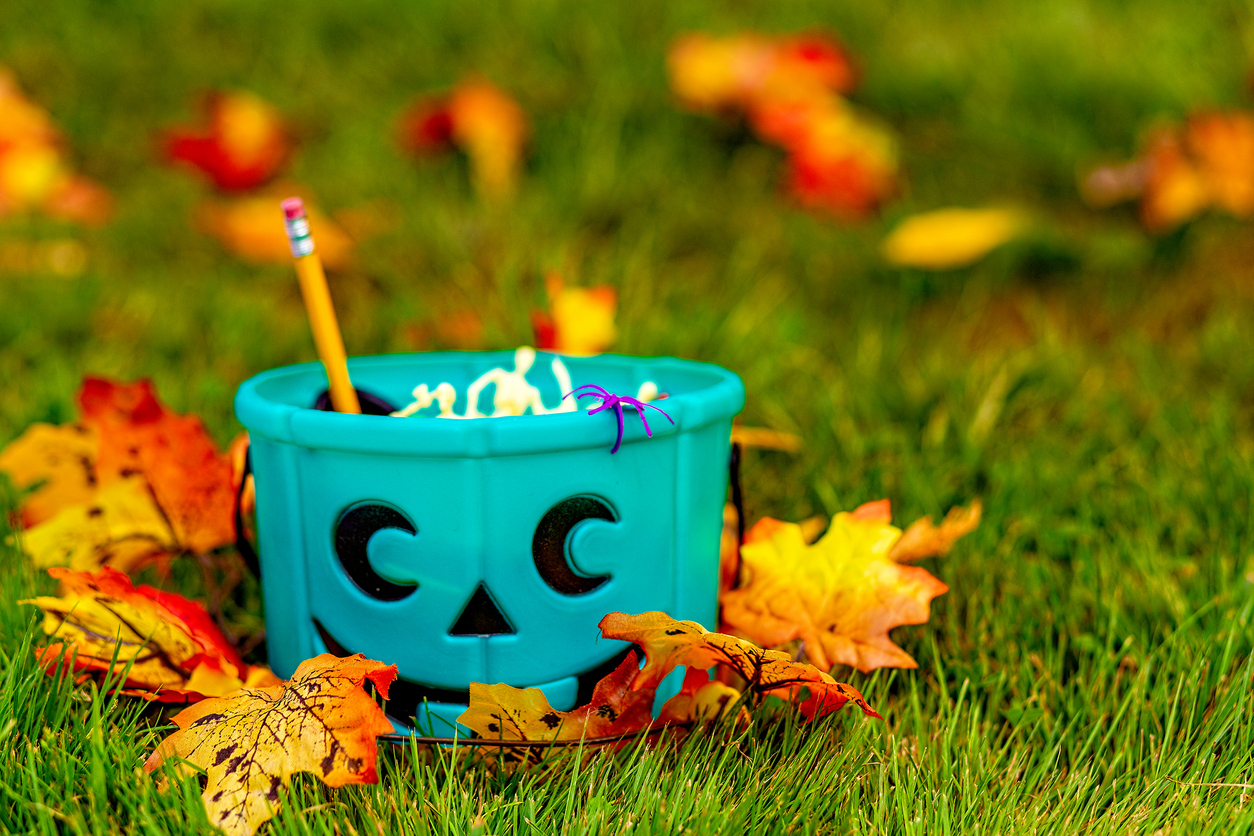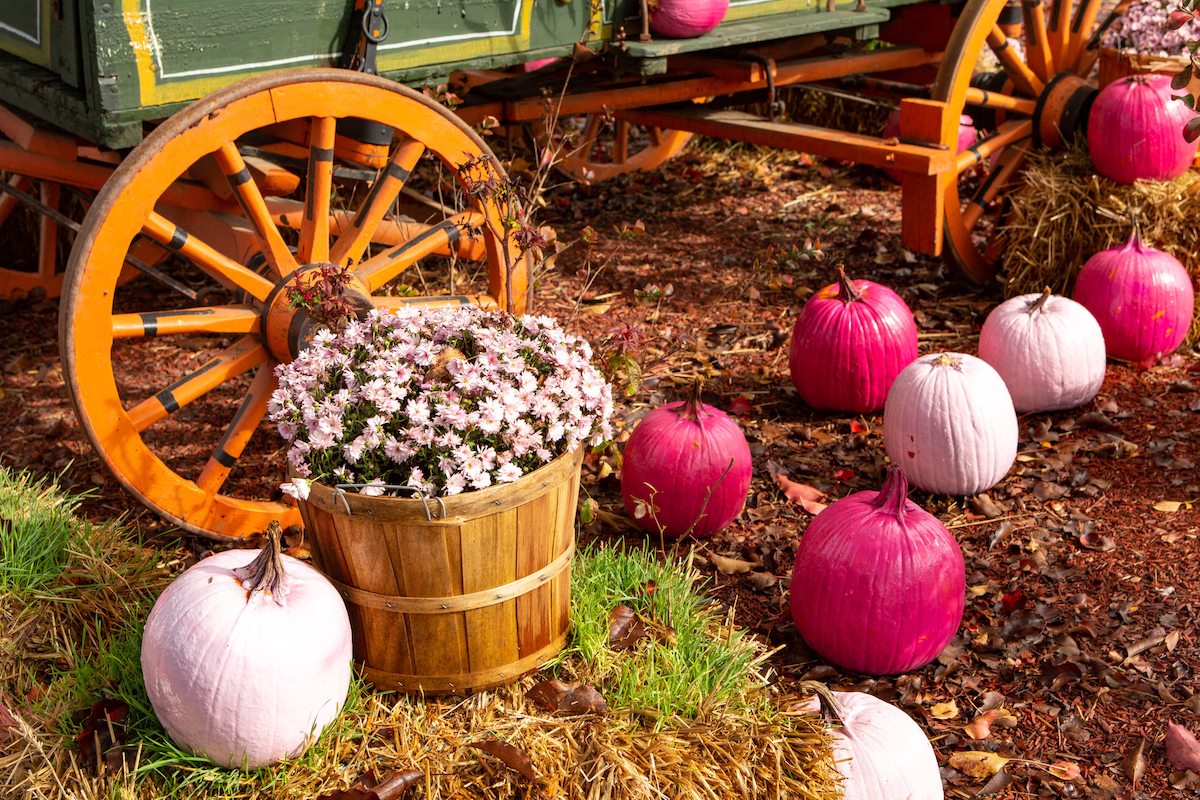

We may earn revenue from the products available on this page and participate in affiliate programs. Learn More ›
Porches decked out with pumpkins and gourds of all shapes are a common sight this time of year. Traditional orange pumpkins are usually the ones that make you want to break out the carving tools. But with all the foot traffic passing by your porch on Halloween, homeowners are using the opportunity to raise awareness for autism spectrum disorder (ASD) by displaying blue pumpkins.
The U.S. government estimates that one in 36 children are on the autism spectrum, and some of these children may require accommodations when trick-or-treating. When a homeowner puts out a blue pumpkin on their porch, it shows that they’re supportive of people who have autism and are willing to talk about it to raise awareness.
The Second Blue Pumpkin Meaning

Strobing lights, masks and costumes, and crowds of strangers can be a lot to process on Halloween, and some autistic children can face sensory overload while trick-or-treating. Blue pumpkins and a sensory-friendly Halloween display not only show the homeowner’s support for ASD awareness, but also lets children with autism and their parents or guardians know that your house is a safe place for them to participate in this fun holiday tradition. Some autistic children may also carry blue pumpkin buckets on Halloween, but homes with blue pumpkins make homeowners’ accommodations clear while helping to spread community awareness.
The concept of displaying blue pumpkins on Halloween began as a grassroots social media movement and isn’t associated with any specific ASD advocacy organization. Since gaining popularity online, the concept has caught on across the country to make Halloween more accessible for everyone.
Blue Pumpkins Show Autism Awareness
Once you’ve decided to display a blue pumpkin, meaning that your home accommodates autistic trick-or-treaters who have sensory needs, there are a few things you should do before Halloween night. First, take some time to research ASD so that you’re well-informed and prepared to accommodate children on the autism spectrum. When decorating, avoid light displays that flash or strobe, as well as any additional loud noises, scents, or animated decorations. Be patient with kids who come to your door, and because some children may be nonverbal, don’t insist on them saying “trick-or-treat” before you hand out candy.
There is no shortage of great blue pumpkin ideas for a DIY sensory friendly display, but there are also plenty of blue pumpkins to buy in store and online. This blue pumpkin window cling mimics stained glass and at a great price. Or create a display on the porch with a bundle of blue coastal fall pumpkins in the seller’s color called Mediterranean to echo the autism-awareness shade of blue.
The Meanings Behind Other Unusual Halloween Pumpkin Colors
Other organizations have seen the success of the blue pumpkin trend and created their own trends with different colored pumpkins.
The Teal Pumpkin Project

It’s easy to confuse blue pumpkins with teal pumpkins, which are used to show that a house can accommodate trick-or-treaters with food allergies. Despite the similar colors, the Teal Pumpkin Project was started to raise awareness and accommodate children with food allergies on Halloween.
Children carrying teal candy buckets are likely allergic to one or more ingredients commonly found in Halloween candy and would appreciate a nonfood treat. Some popular choices include stickers, glow sticks, bubbles, pencils, vampire fangs, and other small toys. Meanwhile, displaying a teal pumpkin on your porch lets people know that these allergy-friendly treats are available at your house. You can also opt for this Halloween teal pumpkin garden flag that gets the message across.
The Purple Pumpkin Project
The Purple Pumpkin Project was created to promote epilepsy awareness, and households can display purple pumpkins to show their support. In 2020, however, purple pumpkins took on a new meaning when homeowners used them to indicate that they would be following Covid-19 safety protocols while handing out candy.
While these pandemic precautions have largely been lifted since then, if you see a purple pumpkin among a neighbor’s Halloween decorations this year, it may indicate that those giving out candy will be wearing masks and following other sanitation measures to prevent disease spread.
Since October is Domestic Violence Awareness Month and purple is the color identified with raising awareness, you might also see purple pumpkins displayed to show that domestic violence happens everywhere. Show your support by donating to causes like the National Domestic Violence Hotline.
The Pink Pumpkin Project

October is also Breast Cancer Awareness Month, and the color pink has become associated with breast cancer awareness, support, and solidarity among survivors. So if you see a pink pumpkin on someone’s doorstep, a survivor or a person undergoing treatment might live at the house. Or the residents are simply supportive of the cause and want to share that support with families visiting on Halloween. It’s a great reminder to make a donation to the Breast Cancer Research Foundation.
Decorating Your Own Colorful Pumpkins
Painting pumpkins to raise awareness–or just to elevate the look of your porch display–is a family-friendly and easy DIY project. You’ll have options when it comes to choosing the best paint for pumpkins depending on the size of your project.
Water-based paints work best, so you’ll want to choose acrylic or latex. If you are painting one or a few pumpkins, you can use acrylic craft paint, which is usually a bargain buy. Choose FolkArt metallic aquamarine for a glistening teal pumpkin, or try FolkArt acrylic paint in true blue for the ASD awareness pumpkin.
If you have a big batch of colored pumpkins you’d like to paint for an occasion, save money by using a gallon of latex house paint. Simply take a color sample to your local paint store and ask them to match it.
Another fun way to decorate the pumpkins is with spray paint. Paint the gourd blue or purple, let it dry, cover it with newspaper, and for the stem use gold spray paint or another metallic like copper.
For a rustic look, grab a jar of chalk paint and paint pumpkins with some aging effects. We like Kilz Chalk Style Paint, the top pick in our list of best chalk paints. Choose authentic navy or blue juniper for a medium blue or teal look.
